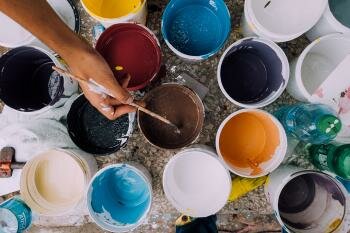SAICM/GEF Project Aims to Help Indonesia Develop National Standard to Regulate Lead Paint
By IISD’s SDG Knowledge Hub , June 3, 2020
Indonesia has launched a project that will help small- and medium-sized enterprises (SMEs) remove lead in paint production processes and support the establishment of lead paint regulations. The project is expected to result in a National Indonesian Standard for paint products and a ban on using pigments that use heavy metals to protect domestic consumers.
Under the project, the International Pollutants Elimination Network (IPEN), together with the Nexus3 Foundation, will work with Indonesia to establish a standard of no more than 90 ppm of lead in all types of paints, including decorative, architectural, and industrial paints. This standard is recommended under the Model Law and Guidance for Regulating Lead Paint that was developed by the Global Alliance to Eliminate Lead Paint.
More than 60 representatives from government, industry, and civil society participated in a January 2020 workshop launching the project. Workshop participants addressed data and information on health and economic impacts, lead paint testing in Indonesia, current regulations, and the paint market situation. In addition, participants heard about work plans for SMEs and possible SME candidates, suggestions on ways to improve current lead paint limits, and a simplified version of the technical guidelines for eliminating lead in paint elimination.
Indonesia is the largest paint and coating market in Southeast Asia, with the property sector being the primary growth driver of Indonesia’s paint and coating industry. Although many manufacturers have reformulated their paint products to avoid lead, the economic costs of childhood lead exposure in Indonesia is estimated at USD 37.9 billion, and four million children under the age of five are at risk.
Indonesia has limited policies and regulations restricting the production and use of lead-based paints, although the government has enacted a voluntary national standard addressing soluble lead content in decorative paint for various uses. In addition, many domestic paint manufacturers have not complied with international standards, and some intentionally lower their quality and use cheap and dangerous raw materials to offer lower prices to the market.
The initiative is part of the Strategic Approach to International Chemicals Management (SAICM) project on global best practices for phasing out lead paint funded by the Global Environment Facility (GEF). [Project Concept Note]


